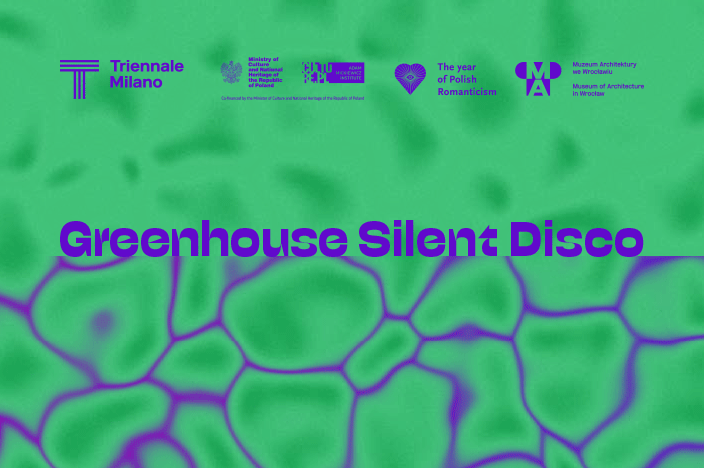At the 23rd Triennale of Decorative Arts and Contemporary Architecture in Milan, the Adam Mickiewicz Institute and the Museum of Architecture in Wrocław are presenting the installation ‘Greenhouse silent disco’. The project is co-financed by the Ministry of Culture and National Heritage.
The installation, designed by Barbara Nawrocka and Dominika Wilczynska, takes the form of a flora-filled greenhouse that allows direct contact between people and plants. It has been equipped with digital sensors linked to computer systems that will continuously track and record what the plants ‘say’ – that is, how they react to certain needs and variables, such as human touch or changing weather conditions.
“Speech” of the plants will be understood through the changing colours of the LED lights, as well as the sounds into which the computer systems will translate it. The LED lights will change to blue, red and white as needed: for example, when it is cloudy or rainy outside the greenhouse.
The project was inspired by the research carried out by the eminent plant physiologist Professor Hazem Kalaji of the Faculty of Agriculture and Biology at the Warsaw University of Life Sciences, who developed a method to monitor the condition of individual plants and entire ecosystems.
The Milan Triennale is one of the most important international events dedicated to design and architecture. It took as its motto this year the phrase: “Unknown Unknowns. An Introduction to Mysteries’. Its main idea is to open up discussion about the challenges of the future of our planet and to reflect on what is still unknown in the contemporary world. “Greenhouse silent disco” fits in with the Triennale’s keynote through references to romantic notions of sensual, bodily experience of nature and empathy with it.
Arkadiusz Słomczyński





